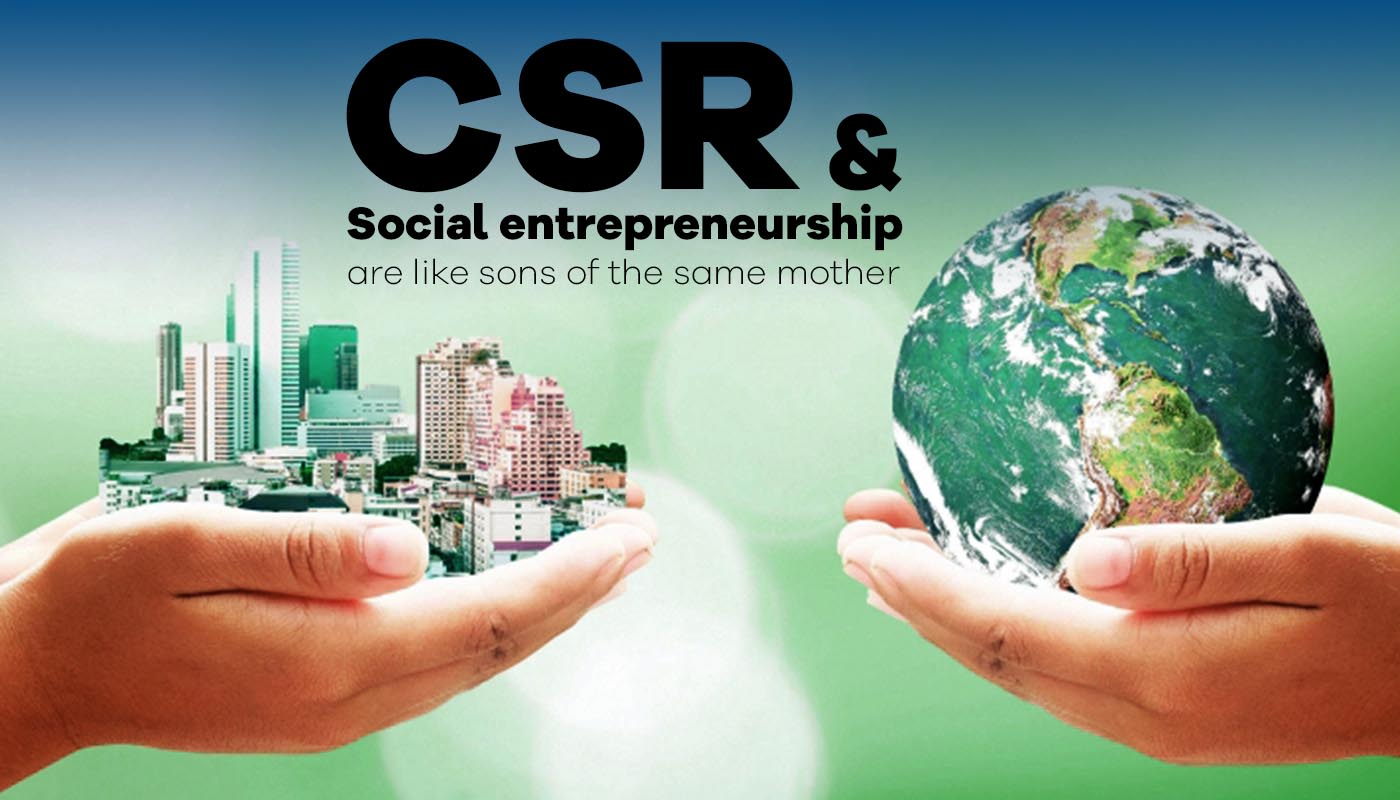In the current world scenario, where there is a massive gap between the rich and the poor because of globalization, it is crucial that development should undertake in a sustainable way for the future wellbeing of human beings all across the globe. The idea of social entrepreneurship has been getting high attention more recently as it “involves the recognition, evaluation, and exploitations of opportunities that result in social value— the basic and long-standing needs of the society— as opposed to personal or shareholder wealth.” (Certo & Miller, 2008, p.g. 267). It is essential that organisations create social values that will add to the welfare of the less privileged sections of the world in order to progress forward together as a global community. This essay will give an insight into the essence of social entrepreneurship by comparing and contrasting the advantages and disadvantages of the concept.
One of the major problems with globalization and increase in commercial development has been that it has not been able to meet the social needs and welfare of the society. In fact, it has widened the gap between the rich and the poor in the world. When industrialization advanced some parts of the world greatly, the other parts of the world remained under poverty to an extent where even the basic human necessities are not conformed to the standard. This has pressed the need to develop businesses that create social value that serve the poor in sustainable ways. As a result, it has been noticed that a large number of social activists and social entrepreneurs have risen from different parts of the world over the past years. Dees, J. G. (1998). Some of the main characteristics of a social enterprise are that its main aim is to achieve social objectives instead of profit and their financial earnings are used for re investment rather than sharing it with the stakeholders. (Choi & Majumdar, 2014). Social enterprises will have two main objectives which can increase the level of employment opportunities to the underdeveloped sections of the society and/or provide necessities and other products at a reasonably low price that corresponds to their income level.(Choi & Majumdar, 2014).
An example case study, which talks about an initiative by Muhammad Yunus in Bangladesh, where he founded Grameen bank, for providing unsecured loans to the rural population of Bangladesh. As rural people did not have, the collateral or social status to get loans from commercial banks in the cities, this initiative was a blessing for the poor people in Bangladesh. The sole purpose of this initiative was to give opportunities for the poorest of the poorest people and women who are economically and socially impoverished. (Mair & Marti, 2006).
Social enterprises are also able to open up job opportunities to the disabled and retiring population of the society thereby utilizing the hidden knowledge and skills in the society. In this time, where the trend of start-up organisations is high, it becomes easier for anyone who had a socially driven goal to start up their own social enterprise. (Dobele, 2012). Social entrepreneurship comprises of five major components: Social value creation, the social entrepreneur, the social entrepreneurship organisation, market orientation, and social innovation.
Social value creation depicts how the enterprise created social value by addressing social problems and pressing on various social issues like freedom, equality, and etcetera. The social entrepreneur is the one who initiates and innovates ideas to find solutions for the social changes that takes place in the society.
A social entrepreneur would be a risk-taking change-maker who is deeply intuitive and sternly stands against the injustices and wants to make a difference in the society. The social organisation can have different frameworks such as for profit, not for profit or hybrid organisational structures.
The market orientation is one of major parts of Social entrepreneurship. It depicts the entity’s commercial activities, financial standing, and self-sufficiency in order to grow and survive in the market. Social innovation a term that is coined to explain that the environment is dynamic in nature and is constantly changing. It is essential that the enterprise keep up with the changes by rigorously innovating, creating innovative models and in the form of value creation. (Choi & Majumdar, 2014).
Even though one side of the idea of ‘social entrepreneurship’ is bright and enlightening, there are some limitations to it as well. A social enterprise is an arena where business professionals as well as social workers come together to do business for the benefit of the society. It be a challenge to synchronise the business and social aspects to achieve one goal. In most cases, the financial achievements are unattained, as it is not a profit driven enterprise. In a commercial enterprise, it is easier to keep track of the organisational achievements and its business standing through accounting reports and other data as everything can be measured through numbers. Whereas in a social enterprise, the focus is to increase the welfare of the people and that can be the driving force of the company. In certain cases, (Nicholls, 2009). This inability to achieve financial goals can reduce the life of the enterprise.
In most cases, social entrepreneurs can trust their instinct rather than based on strategic and logical thinking when it comes to making major decisions. They use the ‘pile in the sky’ approach, which focuses mainly on intuition and qualitative facts rather than the practical side of things. These decisions may be highly innovative in some cases, but also have the potential to fail drastically. A social enterprise, however, has to compete with other businesses and bear the same risks; this can be difficult without proper self-funding into the business. (Choi & Majumdar, 2014).
A social enterprise does not hold any extra privileges as compared to other businesses. This can incus high costs when it comes to training the employees and other production activities. The lack of defined legal acts for the business can hinder it from smooth operations. (Dobele, 2012)
Social entrepreneurship can be a confused term in some cases. The word entrepreneurship depicts that the organisation carries out business activities like any other enterprise whereas the ‘Social’ side of it conveys that its survival is only to meet social needs.
This can be contradicting, as it can be impossible to grow as an enterprise if it lacks a sound financial standing. For example, Ben and Jerrys’ an ice cream enterprise focus is to be profitable as well as be socially responsible.
The company introduced one of its notable projects called “Partner Shop” which allowed not for profit organisations to start its franchisee without paying its usual franchise fees. It has donated more than $1.1 million to charitable organizations in 2004. (Peredo, A. M., & McLean, 2006) The costs for maintaining and growing an enterprise can be an expensive deal and has to have sufficient financial assistance for smooth functioning.
One of the biggest scopes for Social entrepreneurship will be linking with corporate social responsibility (CSR) by Businesses where they have been have been getting high recognition lately. CSR and Social entrepreneurship are closely linked as both the concepts are closely linked to giving back to the society.
Several Businesses all over the world, as a part of CSR have shared their profits but also conducted social activities and rendered help in poorer sections of the society. However, Social entrepreneurship is a much more complex term, which focuses on conducting business activities for creating social value. (Mair & Marti, 2006).
CONCLUSION
Even though there are several limitations to social entrepreneurship, the world is at that point, where there is an emergency for the social issues to be addressed. With a large section of the world population under poverty and majority of the developing countries’ population unemployed, it is impossible for economic development to take place without addressing these issues.
Models, theories and frameworks are being introduced by scholars across the globe to find a solution to the limitations of smooth and successful functioning of Social enterprises. This concept has potential in bringing equality and basic living standards for communities all across the globe.







Leave a Reply